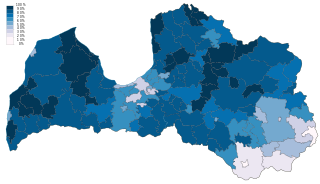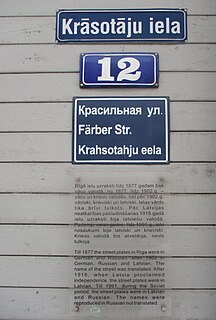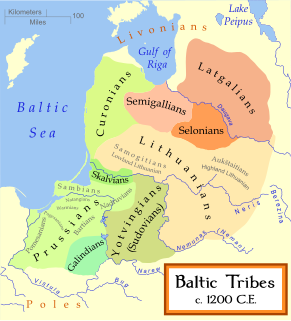 W
WBelarusian is an East Slavic language spoken by the Belarusians. It is one of the two official languages in the Republic of Belarus under the current Constitution, along with Russian. Additionally, it is spoken in some parts of Russia, Lithuania, Latvia, Poland, and Ukraine by Belarusian minorities in those countries.
Estonian is a Uralic language of the Finnic branch spoken in Estonia. It is the official language of Estonia, spoken natively by about 1.1 million people; 922,000 people in Estonia and 160,000 outside Estonia. It is a Southern Finnic language and is the second-most-spoken language among all the Finnic languages.
 W
WArticles 4 and 114 of the Constitution of Latvia form the foundation for language policy in Latvia, declaring Latvian to be the official state language and affirming the rights of ethnic minorities to preserve and develop their languages. Livonian language is recognized as "the language of the indigenous (autochthon) population" in the Official Language Law, but Latgalian written language is protected as "a historic variant of the Latvian language." All other languages are considered foreign by the Law on State Language. Latvia provides national minority education programmes in Russian, Polish, Hebrew, Ukrainian, Estonian, Lithuanian, and Belarussian.
 W
WLatvian, also known as Lettish, is an Eastern Baltic language spoken in the Baltic region. It is the language of Latvians and the official language of Latvia as well as one of the official languages of the European Union. There are about 1.3 million native Latvian speakers in Latvia and 100,000 abroad. Altogether, 2 million, or 80% of the population of Latvia, speak Latvian. Of those, around 1.16 million or 62% used it as their primary language at home.
 W
WLeivu Dialect is an extinct South-Estonian dialect that was spoken in North Latvia around the Gauja river spoken by the Gauja Estonians, who became extinct in the year 1988 when the last speaker Anton Bok died. Though there are many recordings of Leivu. The Leivu dialect most closely resembles Hargla sub-dialect of Võro but it was influenced by the Latvian language and possibly even Livonian. In the year 1782 Leivu was spoken by thousands of people, in 1849 around 2600 knew the language and in 1935 only about 131 knew Leivu or spoke it. In 1911 a Finnish Linguist named Heikki Ojansuu went to document the Leivu dialect along with Ludza and Kraasna.
 W
WLivonian Coast is a territory of Latvia historically inhabited by Livonian people. It is located in Northern Courland and encompasses twelve Livonian villages. The protected area is about 60 kilometers long.
 W
WThe Livonian language is a Finnic language. Although its last native speaker died in 2013, there are about 40 reported speakers and 210 having reported some knowledge of the language. The native land of the Livonian people is the Livonian Coast of the Gulf of Livonia, located in the north of the Kurzeme peninsula in Latvia. Possibly unique among the Uralic languages, Livonian has been described as a pitch-accent language.
 W
WThe Ludza dialect or Lutsi is a dialect of South Estonian spoken in Latvia by the Ludza Estonians near the town of Ludza in Latvia. Ludza is the most similar to the Seto dialect of South Estonian. The Ludza dialect has been on a decline and is now extinct. It was estimated that around 800 people spoke Ludza in the year 1894, and in 1936 this number had decreased to only around 30-40 people. The last native speaker of Ludza died in the year 2006 but some people still have small knowledge of the dialect. The last native speaker of the Ludza dialect was Nikolājs Nikonovs, who was from the village of Lielie Tjapši. However the last knowledgeable passive speaker Antonīna Nikonova, died later in 2014.
 W
WThe Russian language in Latvia is the second most commonly used language at home and 26.9% of the population were ethnic Russians (2011).
 W
WSelonian was a Baltic language spoken by the Eastern Baltic tribe of the Selonians, who until the 15th century lived in Selonia, a territory in southeastern Latvia and northeastern Lithuania.